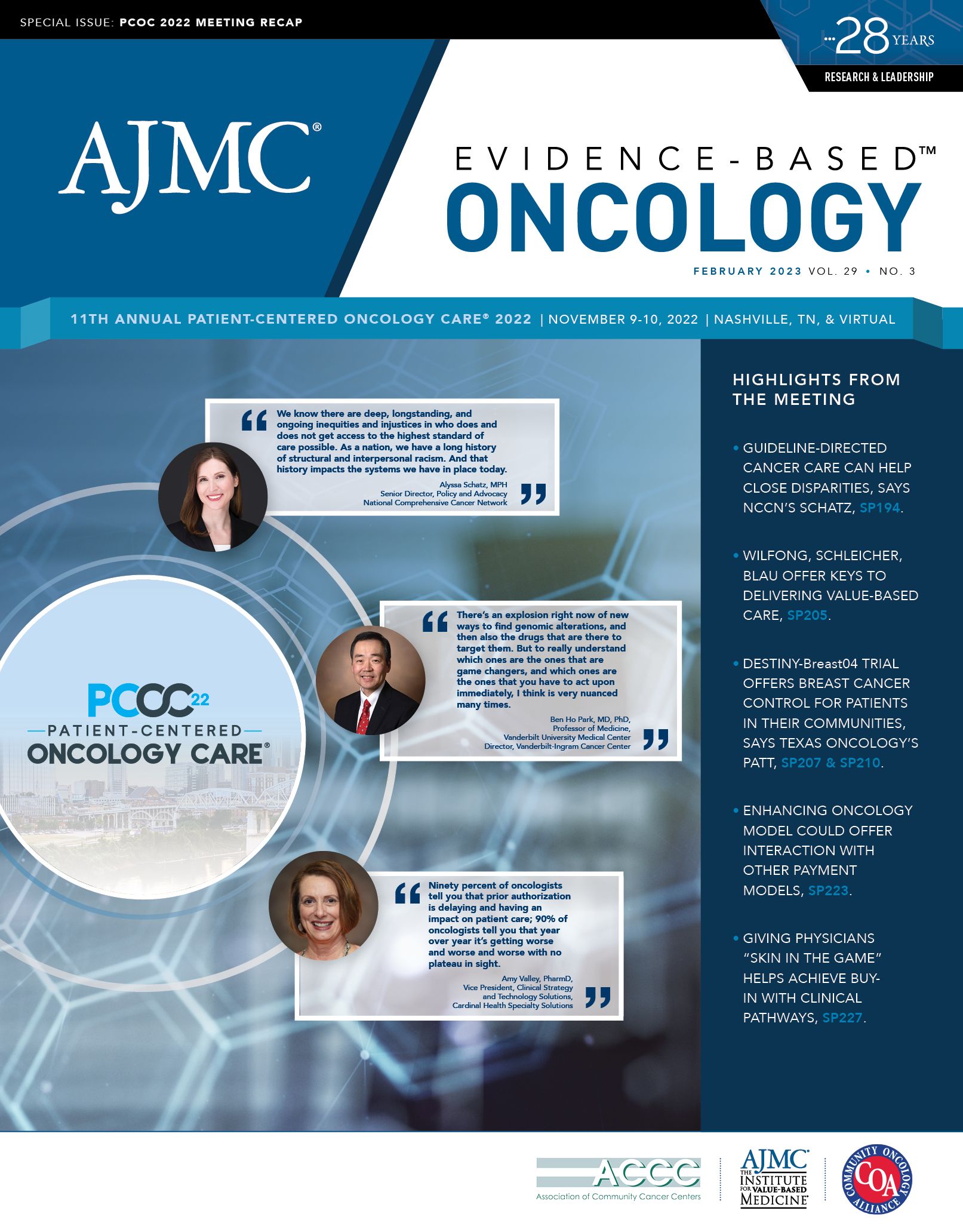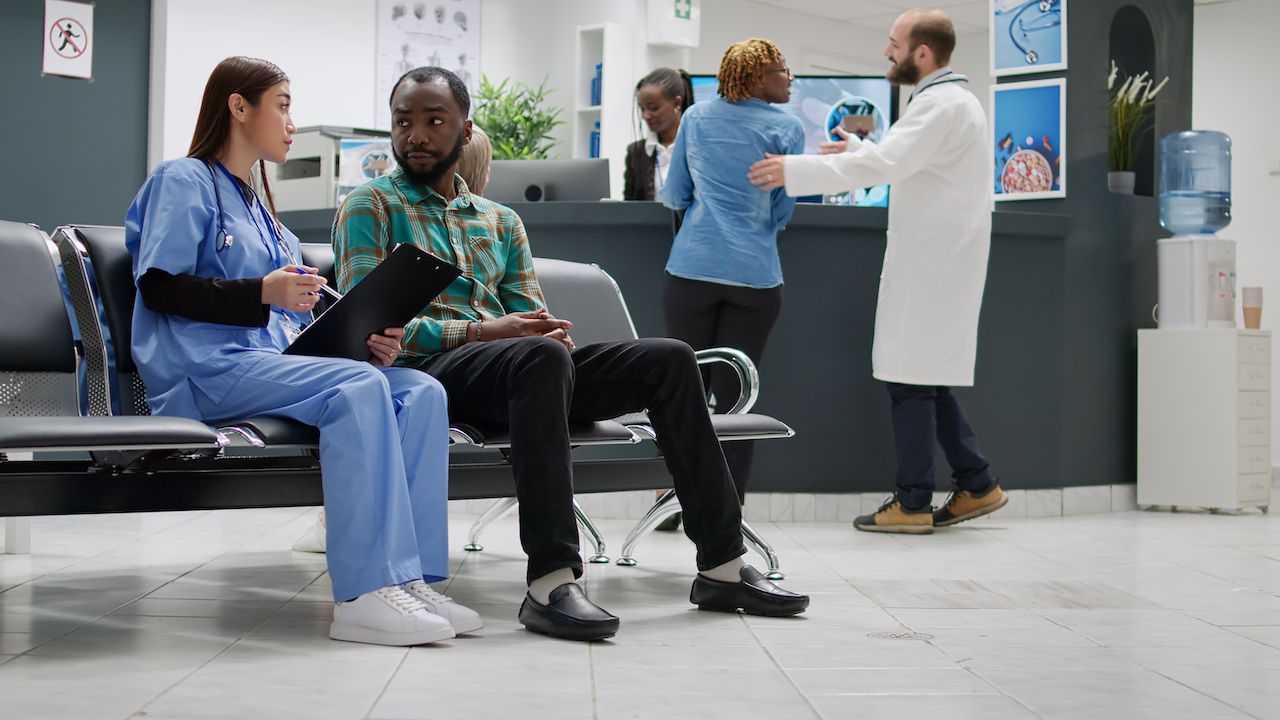Publication
Article
Evidence-Based Oncology
Building More Diverse Clinical Trials in Oncology: Strategies for Providers, Payers, and Community Stakeholders
Author(s):
Therapeutic innovations in oncology have led to major breakthroughs in patient outcomes, with more than one-third of specialty drugs in the pipeline being investigated for clinical development in cancer. However, the lack of diversity in clinical trials remains a critical issue perpetuating inequities in oncology for underserved patients and racial and ethnic minority populations.1
As emerging therapeutics continue to advance cancer care, these populations remain excluded, according to Joseph Alvarnas, MD, vice president of government affairs, City of Hope, and chief clinical advisor, AccessHope, Duarte, California. Alvarnas also served as cochair of the Patient-Centered Oncology Care® (PCOC) 2022 conference, held November 9-10, 2022, in Nashville, Tennessee. A session on progress in bringing greater diversity to clinical trials was presented on the second day of PCOC, during which Alvarnas and panelists addressed several challenges and strategies in designing clinical trials that better integrate underserved communities and racial and ethnic minority groups.
Lori J. Wirth, MD, medical director of the Center for Head and Neck Cancers and chair of Endocrine Oncology at Mass General Cancer Center in Boston, Massachusetts, highlighted that a major barrier for patients is just being able to arrive at the clinic, particularly for those with more advanced and rare cancers. Identifying patients, getting them to academic medical centers, and then providing the support necessary to enroll them in clinical trials is a huge challenge, Wirth said.
By race and ethnicity, research has shown that Black patients with cancer are more likely to present to the clinic with advanced disease compared with White counterparts. Black patients are also more likely to face socioeconomic issues related to education, income, and insurance status.2
At Mass General Cancer Center, one approach used when matching patients with a clinical trial for a targeted therapeutic is collaborating with study sponsors and their travel assistance programs, which can be engaged to bring patients to Boston from across the United States and even worldwide.
Wirth noted that the cancer center works with other centers that provide care to patients without insurance or whose coverage is not accepted at Mass General in order to expand clinical trial access. “We want to make sure we get every single one of those patients into the clinical trials so they have the opportunity to benefit from these incredible new drugs we’re developing,” she said. “[Another] barrier that has been overcome in Massachusetts is insurers covering the cost of patient care and clinical trials. There’s a Massachusetts law that [says] insurers based in the state have to provide coverage for patients in clinical trials, [and] that kind of state legislation makes a huge difference for our patients in the New England area.”
On a nationwide scale, Duncan Allen, MHA, described the unique considerations involved with managing clinical trial enrollment for patients of different communities. Allen, who serves as senior vice president of clinical services at OneOncology in Nashville, Tennessee, oversees a research program that provides care in more than 100 zip codes in the United States, many of which are underserved areas. He referenced the utility of genomics and precision medicine to match patients to clinical trials.
Ensuring clinical trial governing bodies are representative of the communities they serve can have a substantial impact as well, he said, as these individuals are at the forefront of guiding the decision-making process for clinical trial enrollment. “In our mind, there’s one clinical decision support tool, and that tool integrates clinical trials, genomics, [and] clinical pathways into one solution. That’s what we’re working to build. We think that process can be integrated at the point of the decision itself, so [it’s] bringing more of a deep learning process to medicine,” he said.
“As it relates to trial design, one of the things we’ve [done] is [created] a frictionless process. We want to make it easy for a patient to do e-consent, to fill out any sort of data forms. In a rural setting, where you have to drive to different counties for care, that’s a big deal,” Allen said. However, as seen with the COVID-19 pandemic, improving adherence to health services is not only limited to access or accessibility of care, but it also requires educational efforts to combat misinformation and distrust in the health care system.
In her previous work with City of Hope’s Community Outreach and Engagement program, Mayra Serrano, DrPH(c), MPH, CHES, health equity director for Anthem Blue Cross’ state of California Medicaid population, noted that for underserved populations and racial and ethnic minority groups, particularly undocumented individuals, providing information on privacy and confidentiality is key, as is building awareness on the clinical trial process and its benefits. “One of the ways you overcome some of that distrust is by working with trusted [individuals] in the community, whether it’s faith-based organizations [or] community-based organizations, and it’s no different on the payer end,” Serrano said. “To address the social determinants of health, the access to care, working with the community is the key—making sure we work on community-based participatory research that is born, designed, and worked on in the community.”
As oncology drugs currently dominate the medical benefit spend, collaboration between payers and providers is crucial, Allen said. Citing takeaways from the DESTINY-Breast04 trial (NCT03734029), Allen noted how the cost savings generated by improved patient outcomes achieved with these innovative therapies incentivizes payers to fund and promote clinical trial enrollment. “It’s time that payers began to ask more questions,” he said.
"And I think there’s a business model of research behind that, that they would be interested in. If a sponsor/manufacturer is covering one of your fastest-growing line items on your [profit and loss statement], I would pay attention to that.”
Ultimately, Serrano highlighted the importance for providers to be knowledgeable on the available data for specific drugs and how they compare with current standards of care, reimbursement, and other aspects related to the infrastructure of designing and enrolling patients for a new clinical trial in having these conversations with payers. “Participation in clinical trials is much more complex than just having a patient say yes. It involves all these systems working together to create that solution,” she said.
Wirth added, “If we can work together with sponsors, payers, the community programs, and the institutions doing the clinical trials to support greater access to clinical trials, then I think it will be met with some success.”
References
1. Gaddy JJ, Gross CP. Addressing racial, ethnic, and age disparities in cancer clinical trial enrollment: time to stop tinkering around the edges. JAMA Oncol. 2022;8(12):1792-1793. doi:10.1001/jamaoncol.2022.5006
2. Esnaola NF, Ford ME. Racial differences and disparities in cancer care and outcomes: where’s the rub? Surg Oncol Clin N Am. 2012;21(3):417-viii. doi:10.1016/j.soc.2012.03.012






